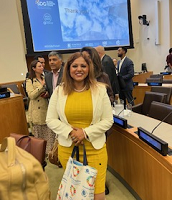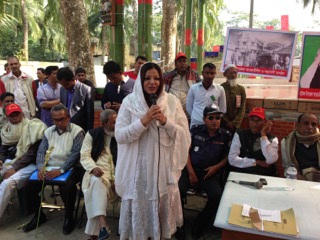Another tropical cyclone made landfall in Mozambique and other countries in East Africa on Thursday, just over a month since Cyclone Idai killed more than 1,000 people and displaced millions in the region.
The new storm, Cyclone Kenneth, was expected to bring heavy rainfall, flooding and winds of more than 120 mph to Mozambique and Tanzania. Forecasters predicted it could be among the most powerful storms to strike East Africa in modern history, and as the cyclone moved toward shore, it killed three people in the island nation of Comoros, just off the coast, uprooting trees and ripping off roofs.
The storm was expected to dump as much as 13 inches of rain within 24 hours of making landfall, forecasters said. More than 700,000 people live in the cyclone’s path, according to the United Nations.
“This is another potential tragedy for Mozambique,” said Dorothy Sang, a manager for the aid group Oxfam who is based in Beira, the port city hit hard by Cyclone Idai last month. “We’re still struggling to scale up and meet the needs of everyone after the last cyclone. This will make it much harder.”
Meteorologists expected that the new cyclone would strike the Mozambican province of Cabo Delgado, about 600 miles northeast of Beira. It made landfall north of Pemba, a city in the province, around 4:15 p.m., according to the Joint Typhoon Warning Center.
Forecasters on Thursday upgraded the storm to Category 4, the second-highest hurricane classification. The U.S. National Oceanic and Atmospheric Administration said it was the first hurricane-strength storm in modern history to make landfall in Cabo Delgado province.
Déborah Nguyen, a communications officer for the World Food Program who is also in Beira, said strong winds had hit Cabo Delgado by Thursday afternoon.
“Some buildings are already damaged,” Nguyen said, adding that trees had blown over and power outages were expected.
Cabo Delgado lies north of regions accustomed to cyclones, so local communities are less prepared to deal with flooding, said Sang, of Oxfam.
Rescue workers stockpiled more than 300 tons of emergency rations but are concerned about being able to reach people if roads are damaged, Nguyen said.
The presence of armed militias in the region — where more than 100 people have been killed in the last year — pose an additional security threat, she added.
Augusta Maita, director of Mozambique’s national disaster management agency, told reporters that evacuation plans were in place, “even if it means forced evacuation.”
In Tanzania, the authorities closed schools and ordered civil servants to stay home.
Aid workers in Mozambique have scrambled to contain diseases like cholera and malaria since Cyclone Idai receded, with the World Health Organization requesting $40 million to deal with the crisis. Further damage would be likely to set back these efforts, aid officials said.
Early photos sent by Nguyen out of Cabo Delgado showed homes damaged by the storm and giant trees torn from the ground as rain set in for the night.






















